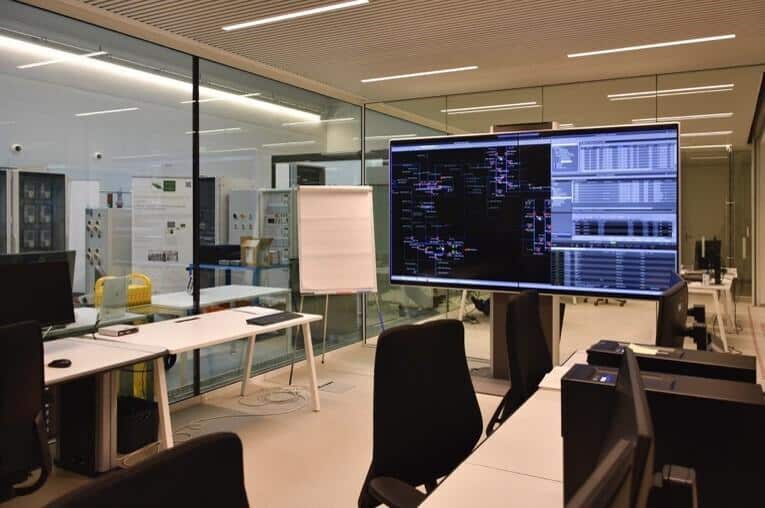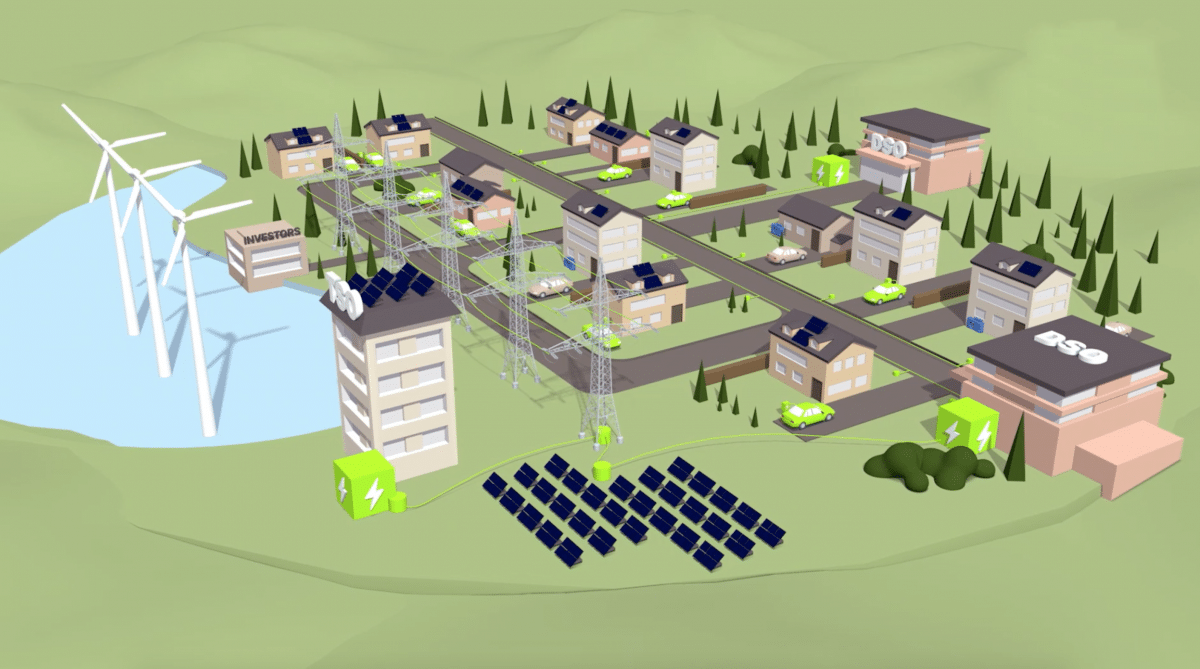ADriaN – Active Distribution Networks
ADriaN is a long-term bilateral research cooperation between Fluvius, the Flemish Distribution Grid Operator, and EnergyVille.
With the traditional methods to design and operate the low-voltage distribution grid, the electrification of heating and transport, decentralised production and demand response can cause large surplus costs. The objective of ADriaN is to develop novel techniques, tools and insights for the low-voltage grid, that allow more optimal use of the installed capacity, correct investments only where needed, and the design of effective regulation.
The visibility of the low-voltage distribution grid is limited: the layout of the grid is only partially known, and measurements are limited. In the past, this low visibility was acceptable, as we employed a ‘fit and forget’ strategy: install (over-dimensioned) cables with sufficient capacity to cover all demand peaks. However, the use of the distribution grids is rapidly changing: the distributed renewable production grows (solar panels) and transport and heating sources are increasingly electrified (electric car charging and heat pumps). Demand response technology allows residential appliances to support the energy balance in the electricity system. In Flanders, especially (fast) charging of electric cars and the use of residential appliances to provide ancillary reserves are a concern. These evolutions lead to higher electrical loads and increased synchronicity, which in turn leads to higher peaks: the ‘fit and forget’ strategy becomes increasingly expensive, and with business-as-usual the low-voltage distribution grid becomes a costly bottleneck to the energy transition. So the question emerges if technology can be developed that increases the visibility on the distribution grid, so we can more optimally use the installed capacity, correctly invest where needed, design effective regulation, and correctly inform the energy actors on the constraints of the LV grid. Can, in that sense, the low-voltage distribution grid be an enabler for the energy transition, rather than a bottleneck?

Tackling this question for the Flemish low-voltage distribution grid is the challenge of the ADriaN project. ADriaN is a long-term bilateral research cooperation between Fluvius and EnergyVille. Together they have set up a multi-disciplinary R&D team, composed of power system engineers, data scientists, statisticians, and Artificial Intelligence experts, combining both extensive academic and field experience. The general purpose of the team is to investigate digital twin capabilities for the low-voltage grid: to improve the visibility on the load and congestions in the low-voltage distribution grid, on all time scales relevant to European distribution system operators, and given incomplete data and limited measurements.
A few specific examples of the ADriaN research topics:
- A statistical three-phase unbalanced power flow engine that scales to the entire Flemish grid;
- Tools that leverage on the digital meter data: grid GIS data validation, identify feeders close to congestion, discover the phase of mono-phase connections;
- Analysis of the effectivity of voltage droop control technical regulation;
- Day ahead congestion forecasting tool;
- Tools to statistically model residential offtake and injection without quarter hour measurements;
- Advise on the technical specifications for the next generation digital meters;
- Comparison of the impact of electric vehicle charging on required grid reinforcements for various rollout and policy measure scenarios: the impact of different modes of charging (mono- versus three phase, slow versus fast), smart charging, capacity tariffs, electric vehicle load balancers, night time charging, the impact of socio-economic aspects such as the location of electrified company cars;
- Analysis and comparison of various methods to formulate and communicate grid constraints;
- Impact analysis of massive scale rollout of solar panels;
- Analysis of the effectivity of neighborhood batteries to avoid LV congestions;
- Design of a low-voltage traffic light concept based on nonfirm capacity agreements;
- Unbalanced state estimation for low voltage feeders, using a limited number of (digital meter) measurement points;
- Methods to calculate and represent the hosting capacity of LV feeders.



